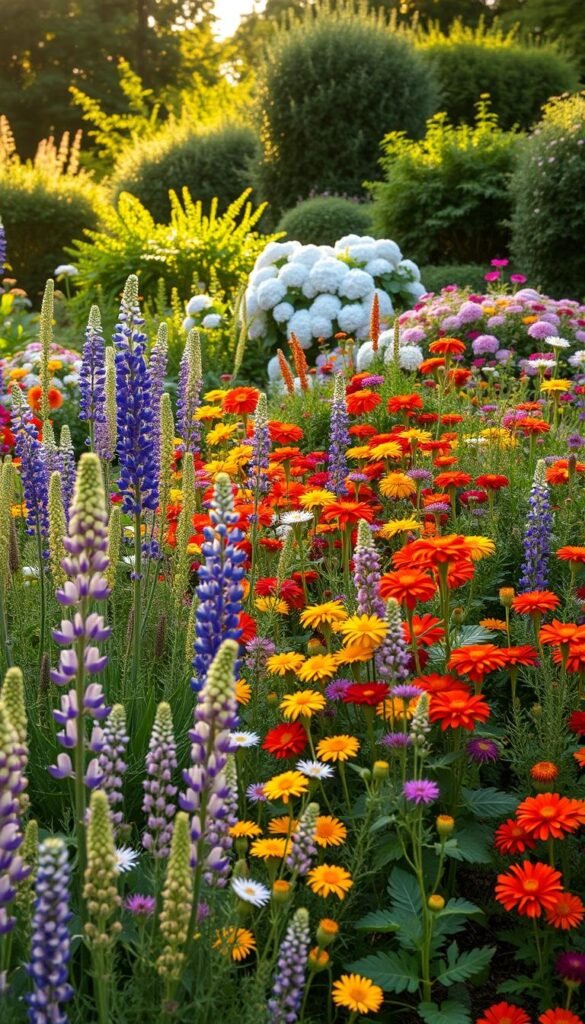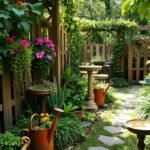Imagine stepping into a space where vibrant blooms mingle with fragrant herbs, creating a tapestry of color that shifts with the seasons. This is the magic of traditional cottage-style spaces, which began centuries ago as practical homestead plots in rural England. Families grew vegetables and fruit trees alongside flowers, blending beauty with utility in their quaint outdoor areas.
Today, these charming landscapes have evolved into lush ornamental retreats. By layering perennials, annuals, and flowering shrubs, you can recreate that romantic, informal aesthetic while adding modern twists. The key lies in selecting varieties that bloom successively—early spring bulbs giving way to summer’s showstoppers, followed by autumn’s rich hues and winter’s textured evergreens.
Your journey starts by embracing nature’s spontaneity. Let climbing roses spill over fences and allow self-seeding blooms to wander freely. This approach creates habitats for pollinators like butterflies and bees, turning your yard into a thriving ecosystem. With thoughtful plant choices, you’ll enjoy visual drama in every month, from frost-kissed seed heads to spring’s first delicate petals.
Ready to craft a space that feels both timeless and uniquely yours? We’ll guide you through blending heritage charm with contemporary resilience, ensuring your outdoor sanctuary remains captivating no matter the season.
Introduction to the Charm of Cottage Gardens
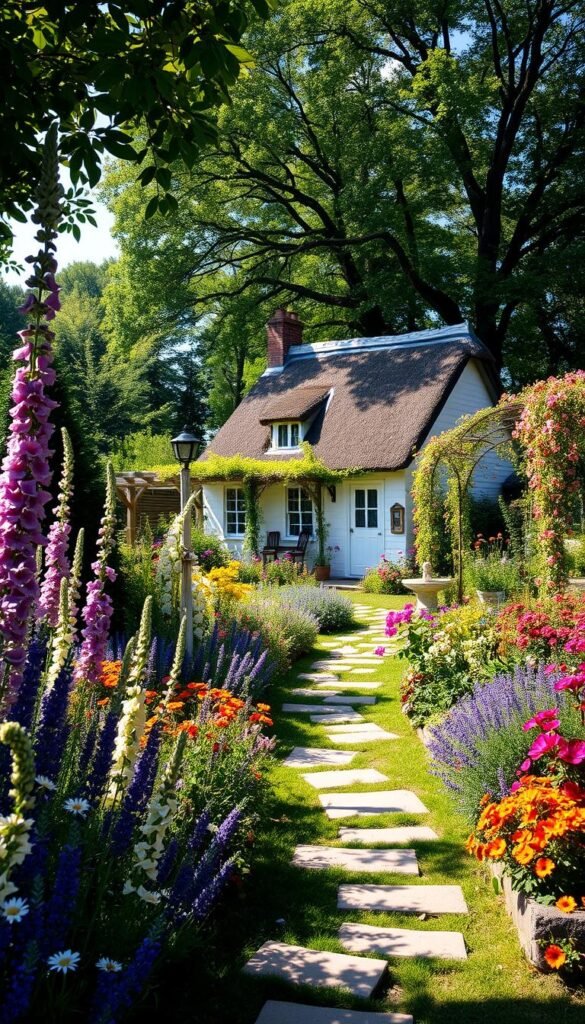
Picture a living canvas where hollyhocks peek over weathered fences and lavender brushes against tomato vines. This isn’t just gardening—it’s art with dirt under its nails. Traditional designs thrive on mixing edible and ornamental elements, creating textured layers that delight all five senses.
Stone pathways and arched trellises do more than define areas—they whisper stories of generations past. These features ground your design while letting blooms tumble freely. You’ll love how climbing nasturtiums soften a brick wall or how rosemary spills onto stepping stones.
| Traditional Elements | Modern Adaptations | Visual Impact |
|---|---|---|
| Dry-stack stone walls | Recycled concrete edging | Adds rustic texture |
| Wooden arbors | Powder-coated metal frames | Supports climbing plants |
| Herb spirals | Vertical pallet gardens | Maximizes small spaces |
The magic happens when you let plants mingle like old friends. Tall delphiniums backdropping frilly columbines create depth, while thyme carpets the soil beneath. This approach isn’t messy—it’s intentionally abundant, offering surprises like volunteer poppies or rogue chamomile patches.
Your outdoor area becomes a sanctuary where beauty serves purpose. Marigolds deter pests near veggies, while sunflowers double as bird feeders. Every choice builds a habitat that’s equal parts pretty and practical—a true hallmark of this enduring style.
Understanding the Cottage Garden Vibe
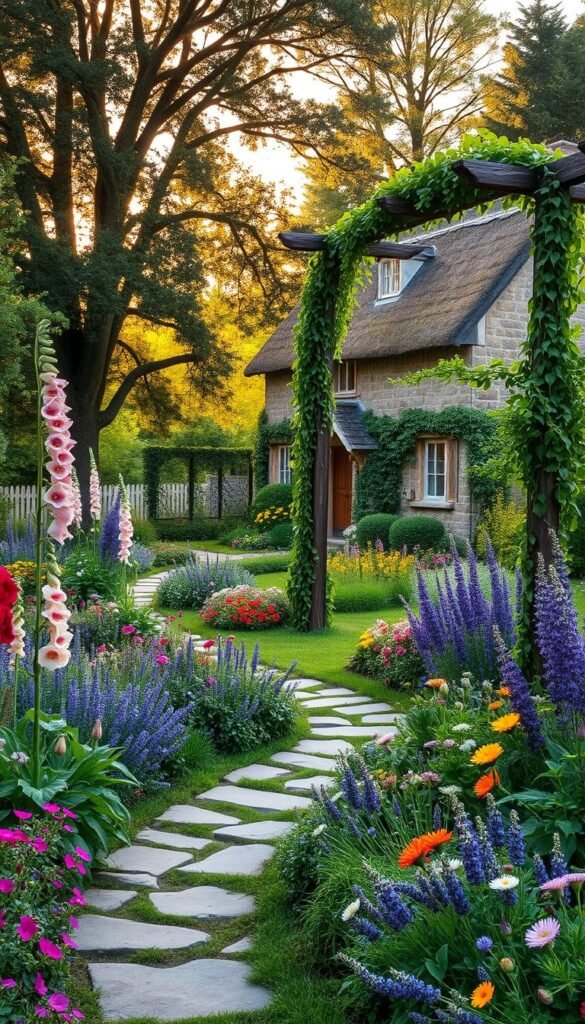
Think of pathways lined with herbs and roses, where every turn reveals a new burst of color. This casual charm didn’t come from design manuals—it grew from resourcefulness. English families centuries ago mixed veggies with blooms to brighten meals and maximize limited land.
Embracing a Romantic, Informal Style
Your space thrives when plants grow freely, like foxgloves leaning into walkways or sweet peas climbing a fence. Forget rigid rows—let lavender mingle with strawberries and cosmos dance with kale. This loose approach creates depth and invites pollinators while keeping things functional.
The Historical Roots of Cottage Gardens
These plots began as practical solutions for rural life. Families needed fresh food but added flowers for joy and indoor bouquets. Over time, this blend of beauty and purpose became its own art form. Today’s version honors that spirit—think parsley bordering peonies or rosemary framing roses.
Want that cottagecore aesthetic? Focus on textures and scents over perfection. Let daisies self-seed between stones, and allow mint to creep where it pleases. The magic lies in balancing wildness with intention—just like those original gardeners did.
Cottage Garden Plants for All Seasons: Ensuring Year-Round Interest
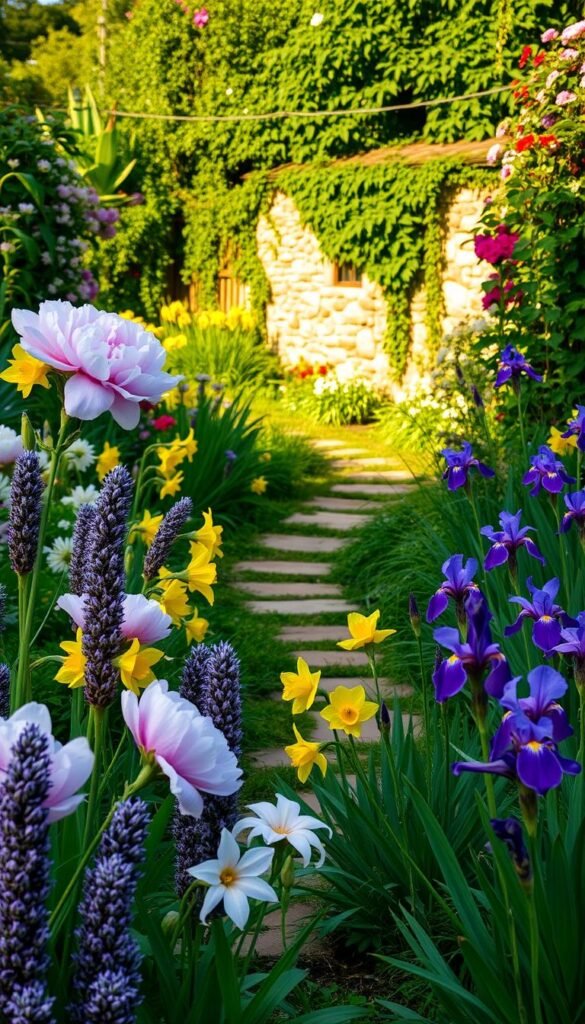
Want your outdoor space to dazzle every month? It’s all about timing. Strategic plant selection lets you create waves of color that roll seamlessly from one season to the next, keeping your landscape lively even in colder months.
Seasonal Planting Strategies for Continuous Blooms
Succession planting is your secret weapon. Pair early risers like crocuses with summer stars like phlox and autumn showstoppers like asters. This layered approach ensures something’s always putting on a show.
Cold-tolerant varieties bridge the gaps between seasons. Snapdragons shrug off light frosts, while sweet peas add vertical interest in cool weather. Pansies and violets thrive when temperatures dip, offering cheerful faces amid fading foliage.
- Start seeds in fall for vigorous spring performers like larkspur and poppies
- Mix quick-growing annuals with reliable perennials for nonstop color
- Let bloom periods overlap – as daffodils fade, let peonies take center stage
Check seed packets religiously. Some flowers demand fall sowing for optimal growth, while others prefer spring starts. This attention to timing pays off with healthier plants and longer-lasting displays.
Don’t forget winter texture! Ornamental grasses and seed heads add visual interest when paired with cold-hardy crops like those in our winter gardening guide. By working with nature’s rhythms rather than against them, you’ll create a living masterpiece that evolves beautifully through the year.
Planning Your Cottage Garden Layout for Full Sun and Part Shade
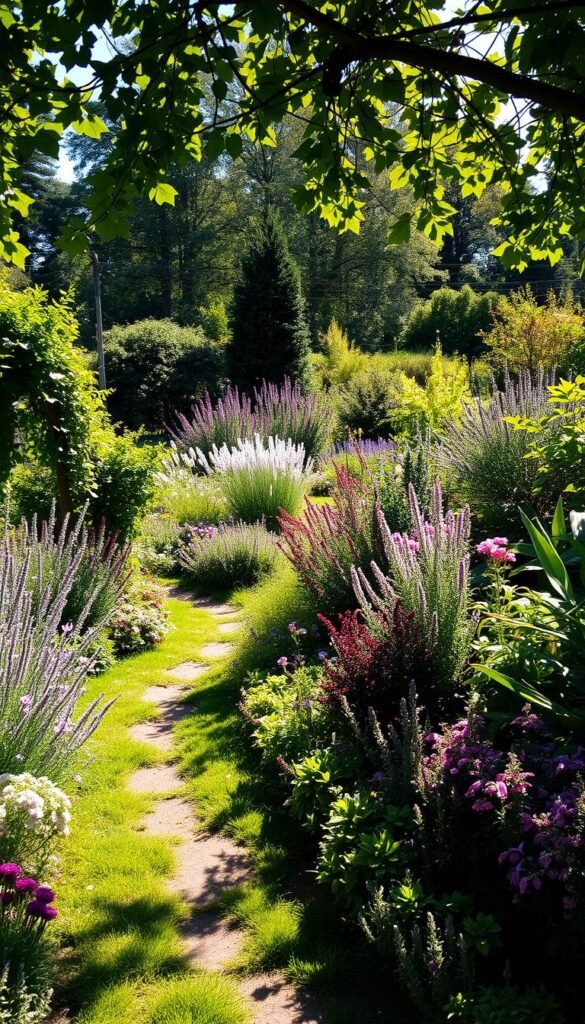
Transform your outdoor space by understanding its light patterns. Start by observing where sunlight lingers longest and where shadows dance through the day. This simple exercise helps match plants to their ideal spots, creating harmony between vibrant blooms and leafy retreats.
Sun-Soaked Showstoppers
Areas bathing in full sun (6+ daily hours) become stages for heat-loving performers. Lavender and coneflowers thrive here, their bold colors attracting butterflies. For continuous summer color, mix zinnias with drought-tolerant sedum—they’ll keep blooming when others fade.
Shady Character Zones
Spaces with part shade offer cool respites for delicate beauties. Columbines nod beneath tree canopies, while sweet alyssum spills over shaded paths. In deeper shade, try hostas with variegated leaves—their foliage adds texture even without flowers.
Smart layout planning turns challenges into features. Use taller sun-lovers to cast afternoon shade for woodland plants below. This layered approach works wonders in compact spaces, where every inch counts. Remember: matching plants to their preferred light conditions means less work and more rewards.
Top Cottage Garden Perennials for Lasting Beauty
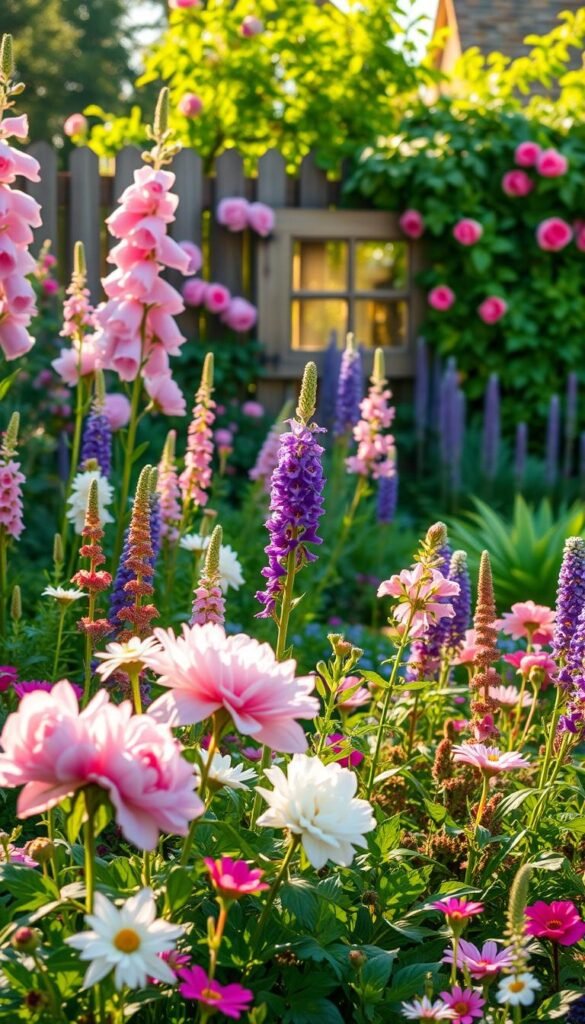
Time-tested perennials form the heart of a vibrant outdoor space that evolves gracefully through the years. These reliable bloomers combine nostalgic charm with modern resilience, offering both beauty and practicality.
Durability and Local Growing Tips
Classic choices like bleeding heart and columbine bring heritage character, while newer phlox varieties resist mildew in humid climates. For low-maintenance options, consider hardy yarrow—its fern-like foliage thrives in poor soil and drought.
Native asters shine as pollinator powerhouses, feeding bees late into fall. They flourish for decades when planted in sunny spots with good drainage. Always match your selections to regional conditions—peonies adore chilly winters, while Shasta daisies tolerate southern heat.
Managing Seasonal Transitions
Leave delphinium seed heads standing through winter—they create striking silhouettes against frost. Come spring, cut back dianthus to encourage fresh growth. Track bloom cycles using expert recommendations to maintain color flow from first snowdrops to autumn’s final chrysanthemums.
Smart pruning extends each plant’s prime. Trim spent yarrow flowers in July for a second bloom, but let some asters go to seed. This balance keeps your space lively while supporting local wildlife through colder months.
Inviting Annuals and Self-Sowing Flowers to Your Garden
Discover how effortless beauty unfolds when nature lends a hand in your floral displays. Self-seeding varieties work like tiny garden assistants, scattering their potential wherever conditions allow.
Why Let Flowers Do the Planting?
Self-sowing annuals create ever-changing patterns that feel delightfully spontaneous. California poppies add sunset hues, while cosmos dance on slender stems. These resilient bloomers thrive with minimal care, perfect for beginners exploring low-maintenance approaches.
Forget-me-nots carpet shaded corners with sky-blue charm, and coneflowers stand tall through summer droughts. By mixing these volunteers with perennials, you maintain visual rhythm while embracing surprises. Zinnias might pop up near your rosemary bush, or poppies frame a stone path you never planned.
This planting strategy builds layered textures effortlessly. As some flowers fade, their seeds ensure next year’s show. You’ll love how each season reveals new arrangements – nature’s own design team at work.

